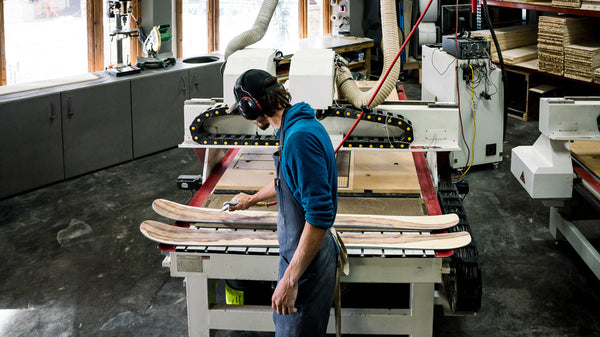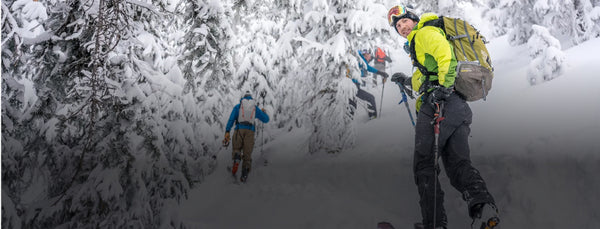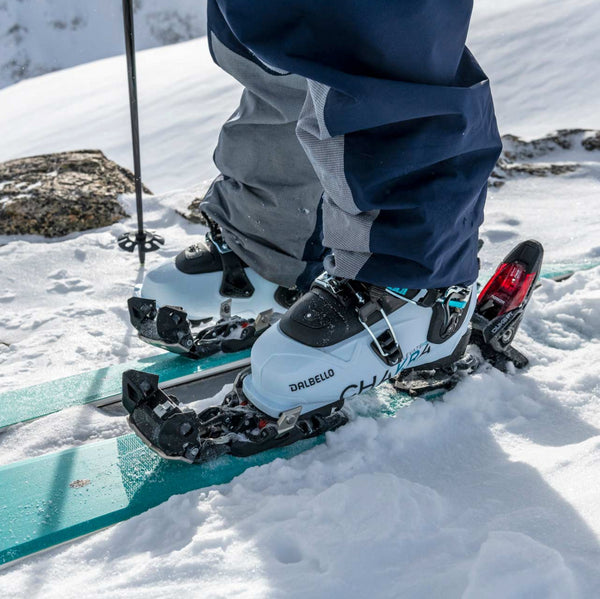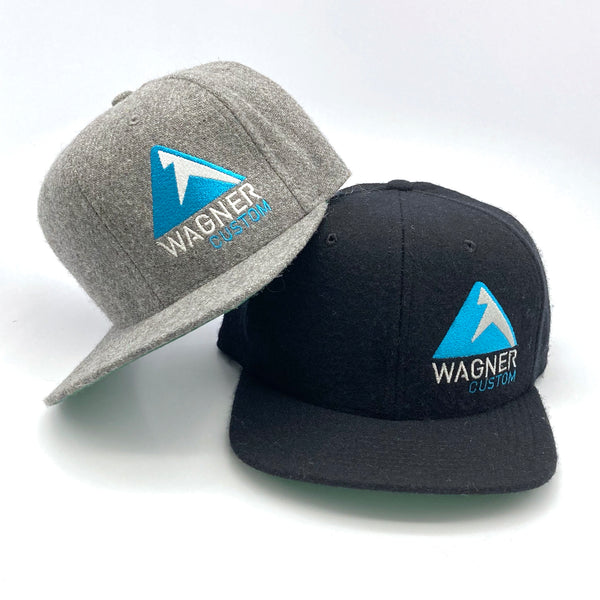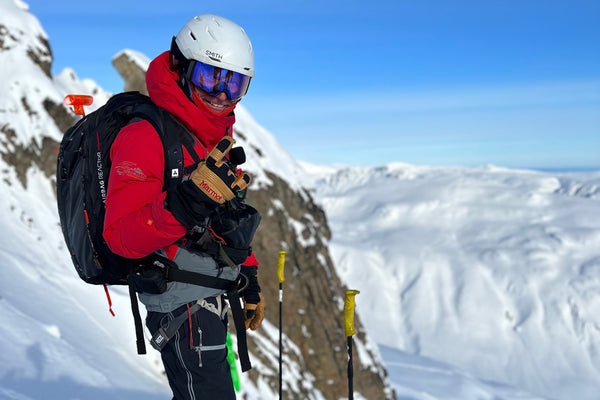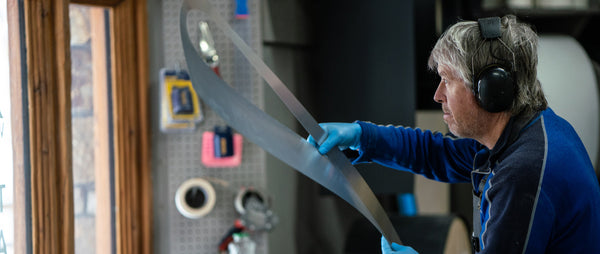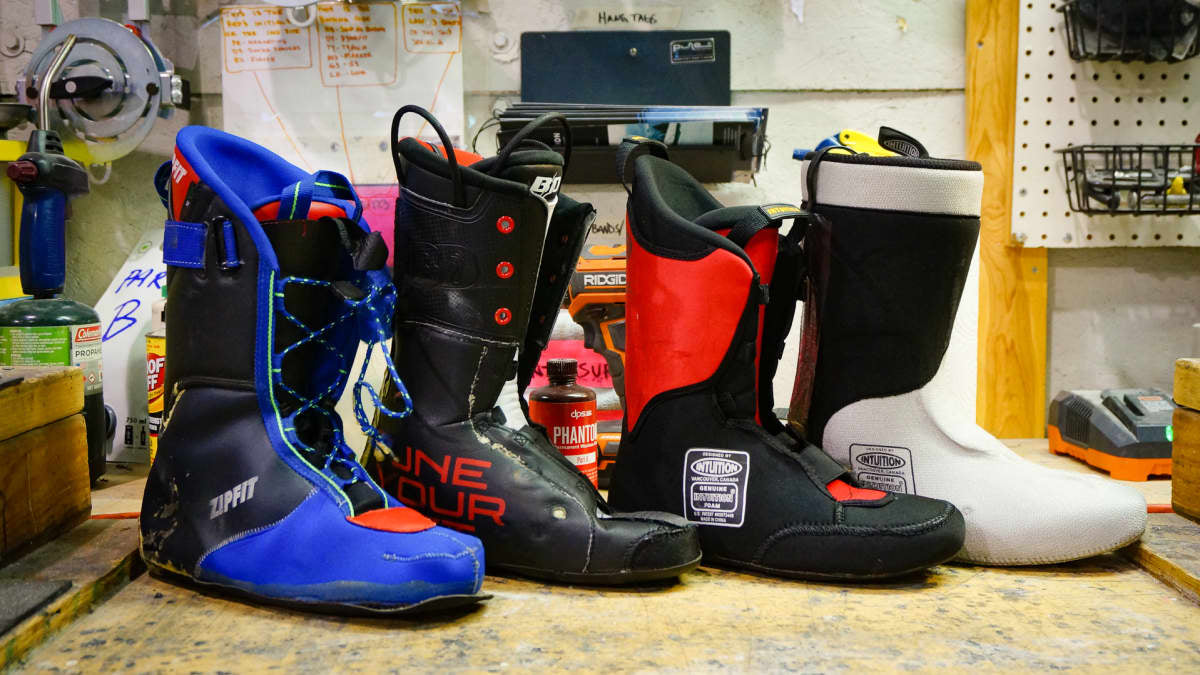
Need to Know: Boot Liners
Before you plant spring tulips in your packed-out ski boots, let's talk about aftermarket boot liners—and how they could extend the life of your shells.
Bootfitting is a mysterious art, one that we don’t even pretend to fully understand. So when it comes to the question of ski boot liners—specifically when to use the stock liner that comes with the boot and when to upgrade to an aftermarket liner—we had to consult our hometown Telluride expert, Sam Tischendorf, the supervising bootfitter at Bootdoctors and most badass mad foot scientist we’ve ever met.

Sam Tischendorf doing that which she does best. Photo: Tecnica
According to Tischendorf, it’s usually best to try to make the stock liner work first. First, she said, after market liners can cost up to $500—no small chunk of change for the consumer. Second, the boot company has put a lot of money and research into their own liner, and an aftermarket liner will change the way the boot feels and acts. “There’s a marriage between the shell and liner; they’re built as a package and are designed to ski in harmony,” she said. Third, it’s better for the environment to wear out the original liner before chucking it in the trash.
However, there are many good reasons to invest in an aftermarket liner, the first being wanting to extend the life of a ski boot shell that’s worked well for you but has a liner that’s completely packed out. “Especially if you’ve had site-specific work done on your shell, why not add an aftermarket liner after the original one has reduced connectivity to the boot?” she said.

If you aren't getting the power you once could out of your skis, it could actually be that the liners are packed out.
How do you know if your liner is packed out? “You can’t find the sweet spot with your buckles and you feel you’re rattling around vacantly in your boot,” Tischendorf said. If the liner is packed out, you aren’t getting the power transmission you once did. An aftermarket liner is a great solution, especially for people who ski more than 50 days a season. “I’ve seen people use the shell successfully for several liners,” she said.
Aftermarket liners also might be the answer for you right off the bat if you have an unusually challenging foot. An extremely low-volume foot (read: skinny foot or calf that doesn’t take up enough room) or a foot that is misshapen from an injury are examples of situations that might call for a more custom liner.

There are many different reasons why an after-market boot liner can extend the life of your ski boot shells. Photo: powder.com
Finally, you might want an aftermarket liner if you are going for the highest level of performance in your boots and want a perfect fit. This is especially true for backcountry skiers and ski mountaineers, Tischendorf noted, because the backcountry boot liners are typically thinner and so lightweight that they pack out very quickly. Those who tour frequently will typically buy a boot that’s slightly larger so they can fit a higher volume and heavier aftermarket liner. “They’re warmer and have a more durable fit, so athletes are willing to have more weight.”
Regardless of which liner you choose, Tischendorf says, be sure to replace the stock insole every single time with a custom footbed (preferable) or one off the shelf (like Superfeet). “The boot manufacturers spend zero dollars on them, knowing that most discerning skiers will get some kind of footbed.”
Types of Liners
Ok, now let’s briefly discuss the types of liners available.

You can get a lot of custom out of foam-injected liners like these from Surefoot.
Foam-injected liners like those from Surefoot, Pulse Boot Lab, and Sidas are the most custom option available. These are great for people with low-volume feet or with orthopedic issues that require a very personalized solution. The foam fills in like a liquid and, when it dries, it provides a super stiff and snug fit that doesn’t pack out quickly. If this sounds like what you might want, be sure to call ahead to your boot shop to make sure they are equipped and trained to inject foam liners.

Heat-moldable foam liners from Intuition are more forgiving and a little lighter than injected liners.
Heat-moldable foam liners, like Intuition or Palau, are more forgiving and a little lighter than their foam-injected brethren. They’re also one of the warmest options on the market. Their lightweight and relative warmth makes them an especially good fit for the backcountry category. It’s best to get these molded in the shop, where they can put a toe cap on to create more room there, but manufacturers also offer instructions on how to do it in your own oven at home. (Another note, some manufacturers already work with Intuition and come with heat-moldable liners, so make sure you ask first before buying another one.)

ZipFit liners are the most expensive liners, but they are also the most durable. Photo: ZipFit
Cork liners, or ZipFits, are the most expensive, but they are also the most durable. They’re made of cork compound, and what makes them so unique is that, unlike foam, you can add, remove, or mold the cork throughout the life of the liner—which the manufacturer states is at least 1,000 days. Similar to foam-injected liners, ZipFits have ports where the material is injected, and the cork can be adjusted at any time. Cork is a good shock absorber, so it won’t be quite as good as the foam-injected liner for power transfer, but for some its durability more than makes up for that.
Did this article bring up more questions than it answered? Call your local bootfitter and book an appointment. We know our skis are the sexiest part of your kit, but having properly fitting boots to drive them is absolutely crucial.
--
Article by Kimberly Beekman
Kimberly Beekman is the former editor-in-chief of the late, great Skiing Magazine (RIP), and a longtime editor of SKI Magazine before that. She currently uses the title of “freelancer” as a beard to ski powder all over the world. She lives in Steamboat, Colorado, with her wonderful daughter and terrible cat.

